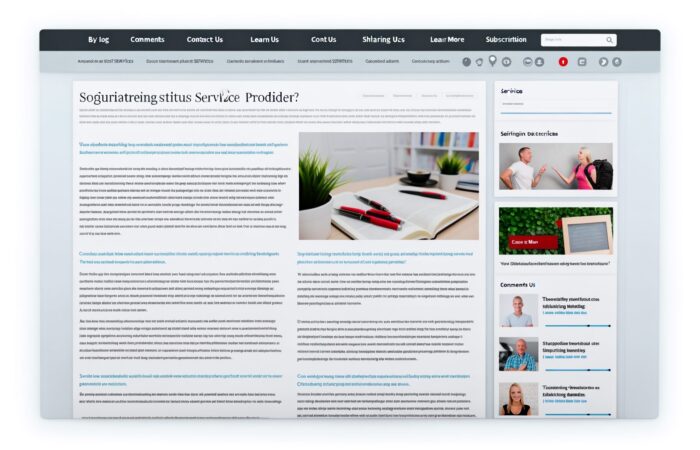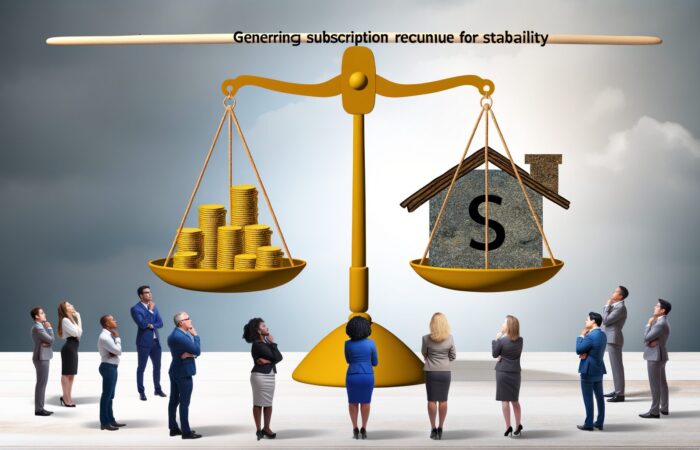Understanding the Importance of Clear and Engaging Content
Let’s dive into why creating clear and engaging content is not just good practice but absolutely essential, whether you’re writing a blog, crafting an email, or updating your website. It’s all about making connections and getting your message across effectively. So, why is this so important? Let’s break it down together.
It’s All About Communication
First things first: communication. The primary goal of any piece of content is to communicate your ideas clearly and effectively. When your content is clear, your audience understands your message without any confusion. This clarity helps in building trust. Think about it – if you’re always straightforward and easy to understand, people are more likely to rely on what you have to say in the future.
Engagement is Key
Now, engaging content does more than just pass information; it makes your reader feel something. That could be excitement, curiosity, or even amusement. Engaging content grabs attention and holds onto it, making your message more memorable. Plus, it’s a lot more fun to read something that’s lively and interesting, right?
Why Bother?
- Connection: Engaging and clear content creates a bridge between you and your readers, helping them feel more personally connected to you or your brand.
- Impact: When readers understand and relate to your message, they’re more likely to be influenced by it, whether that means changing a personal belief or making a purchase.
- Sharing: People share content that strikes a chord with them. If your content resonates, it’s more likely to be shared, spreading your message further.
The Bottom Line
Creating content that is both clear and engaging might seem like a tall order, but it’s incredibly worth it. It’s about making sure that your voice is heard in the vast ocean of information out there. Reflect on this: every piece of content you create is a reflection of you or your business. Make it count by being clear and captivating.
Remember, the more effectively you communicate, the more effectively you connect. And in a world where everyone is bombarded with endless streams of information, those connections can really make a difference. So, take a moment before you write: think about what you’re trying to say, and how you can say it clearly and engagingly. Your readers will thank you for it!
Identifying Your Audience: The First Step to Effective Content
If you’re diving into creating content, whether it’s a blog, a podcast, or a social media campaign, the first thing you need to nail down isn’t actually what you’re going to say, but who you’re saying it to. Knowing your audience is like having a roadmap in the world of content creation. It guides you through all the twists and turns of crafting messages that resonate and stick.
So, how do you get started with this crucial step? Let’s break it down together!
Understanding the ‘Who’
Start by asking who are the people that you want to reach? This isn’t just about demographics like age or location (though those are important!). It’s about getting into their heads. What are their interests? Challenges? Desires? Understanding these aspects helps you tailor your content so that it feels like a personal conversation rather than a broadcast into the void.
Creating Audience Personas
One effective technique is to create audience personas. These are detailed descriptions of fictional characters who represent your ideal readers or customers. Here’s a simple way to start:
- Collect Data: Look at your existing customers, survey your social media followers, or dive into market research.
- Identify Patterns: Find commonalities in their interests, needs, and behaviors.
- Build Your Personas: Detail their age, occupation, hobbies, and even pain points. The more detailed, the better.
Having these personas at hand lets you visualize who you’re talking to. It can influence everything from the tone of your content to the examples you use.
Ask Questions
Engaging with your audience directly can unveil loads of valuable insights. Try these approaches:
- Surveys and Polls: Quick and easy tools on platforms like Instagram or via emails can garner direct responses to specific questions about their needs and preferences.
- Feedback Forms: Embed these on your website or in your newsletters to collect ongoing responses.
- Comment Sections: Monitor what people are saying in the comments of your posts or videos. It’s often a goldmine for understanding audience sentiments.
Tuning into Social Listening
Don’t forget the power of social listening. Tools like Hootsuite or BuzzSumo can help you catch the vibes of your audience’s conversations online – what are they excited about, frustrated with, or ignoring completely? This info can steer your content development in a more informed direction.
Remember, identifying your audience is not a one-and-done deal. It’s about continually adapting and evolving as their interests shift and new trends emerge. But get this step right, and you’re setting yourself up for a much smoother ride on your content creation journey.
So go ahead, take these tips, and start getting to know your audience today. They’re waiting to hear from you, and now you’ll know just what to say!
Structuring Your Content for Maximum Impact
Let’s dive into one of my favorite parts about creating content: structuring it! Now, I know what you’re thinking – “Isn’t structure all about rigid frameworks and boring outlines?” Well, think again! Structuring your content is like drawing a map for a treasure hunt. It guides your readers through your thoughts, helping them discover the gems of wisdom you’ve laid out. So, let’s chat about how you can structure your content to keep your readers hooked from start to finish.
Begin with a Bang! Start strong by grabbing your reader’s attention. Think of your introduction as the hook that reels them in. Pose an intriguing question, share a surprising fact, or open with a vivid anecdote. Make them think, “I need to read more about this!”
Map Out Your Ideas
Once you’ve caught their interest, it’s time to deliver on the promise of your hook. Lay out your main points in a logical order. Think of this as building a pathway through your article. Each section should naturally lead to the next. Here’s how you can do it:
- Headings and Subheadings: Use these to break up your content into digestible chunks. Imagine each heading as a signpost that tells your reader where they’re going next.
- Paragraphs: Keep them short and sweet. Each paragraph should cater to one idea or concept, making it easier for your readers to follow.
- Transitions: Smooth transitions between sections help keep the flow and maintain reader interest. Phrases like “moving on,” “another aspect,” or “on the other hand” work well.
Ending with a Punch
Closing your content effectively is just as critical as the opening. Your conclusion should wrap up your main ideas and leave your reader satisfied, yet wanting more. It’s your last chance to make an impact, so summarise your key points succinctly and end with a call to action or a thought-provoking question.
Why Does Good Structure Matter?
You might wonder, “Why bother with all this structuring?” Well, a good structure doesn’t just make your content look neat; it makes it effective. It ensures your readers aren’t lost in a sea of words. More importantly, it helps them remember your message. And isn’t that the point of great content?
Remember, structuring is not just about organizing content; it’s about enhancing the reading experience. It’s about making your content inviting and enjoyable. So, take the time to structure your content thoughtfully. Your readers will notice the difference, and they’ll stick around for more of your insights.
Tips for Writing Clear and Concise Sentences
Let’s dive into making your sentences sparkle, shall we? Writing clear and concise sentences isn’t just about stripping down your words to the bare minimum—it’s about choosing the right words and structuring your sentences to ensure they pack the most punch. Here’s how you can master this craft:
Keep It Simple
Ever heard of the KISS principle? Keep It Simple, Silly! This rule is golden in writing. Opt for simple, straightforward language rather than complex or convoluted phrasing. Think about it: the easier it is to read your sentence, the more likely your message will land effectively.
Be Active
Active voice for the win! Using an active voice (“The cat chased the ball”) rather than a passive voice (“The ball was chased by the cat”) not only makes your sentences clearer but also more dynamic. Active sentences are generally shorter and more direct. Plus, they give your writing a nice energetic boost!
Cut the Fluff
Here’s where you can be a little ruthless—trim the fat! Look for words that don’t add value to the sentence. Adverbs and adjectives can be culprits here. Do you really need to say “very big” when “massive” does the trick? Each word should earn its place in your sentence.
One Idea Per Sentence
Ever got lost in a sentence that feels like it’s going on forever? To keep your sentences clear, stick to one main idea per sentence. This helps in breaking down complex information into digestible bits, making your content easier to understand and much more enjoyable to read.
Use Strong Verbs
Verbs are the engines of your sentences. Choosing strong, vivid verbs can dramatically improve clarity and reduce the number of words needed to express an idea. Instead of saying “make a decision,” why not just “decide”? Strong verbs create stronger images in the reader’s mind.
Read It Aloud
This tip might sound a bit odd, but it works wonders. Reading your sentence aloud can help you catch awkward phrasing and overly complex constructions. If you stumble over the words, your reader probably will too. If it sounds natural when spoken, it’s likely clear.
Punctuation Is Your Friend
Punctuation marks are not just formalities; they’re tools to help you clarify meaning. A well-placed comma can be the difference between confusion and clarity. Don’t shy away from them, but also, don’t overdo it. Balance is key!
Remember, clarity in writing doesn’t mean dumbing down your content—it means making sure your brilliance is understood by everyone. It’s all about choosing the right words and structuring your sentences in a way that makes them accessible and engaging.
Engaging Your Readers: Techniques and Strategies
Let’s dive into one of the most thrilling aspects of creating content: engaging your readers. After all, what’s the point of writing if you can’t captivate your audience and keep them coming back for more? Here, we’ll explore some dynamic techniques and strategies to keep your readers glued to your content.
Start with a Hook
Imagine you’re fishing. To catch a fish, you need a good hook, right? The same goes for writing. Your opening sentence or paragraph should be intriguing enough to catch your readers’ attention and reel them in. Whether it’s a surprising statistic, a provocative question, or a compelling anecdote, make sure it’s something that makes your reader think, “Tell me more!”
Storytelling is Your Best Friend
Everyone loves a good story. Integrating storytelling into your content can transform even the most mundane topics into captivating tales. Stories create a personal connection and can evoke emotions, making your content memorable. Next time you’re writing, think about how you can turn your key points into a story. Remember, even data can tell a story.
Keep It Conversational
No one likes to read a textbook (unless they have to). When you’re writing, imagine you’re talking to a friend. Use a conversational tone to make your content more relatable and enjoyable. This doesn’t mean sacrificing professionalism, but rather making your text flow as naturally as a good chat over coffee.
Ask Questions
Engaging isn’t just about talking; it’s also about listening. By asking questions, you invite your audience to think and interact with your content. It’s like tossing a ball to your reader and waiting for them to throw it back. This interaction keeps the brain ticking and the engagement levels high.
Use the Power of Visuals
While this section deserves its own detailed discussion, it’s worth mentioning briefly here. Visuals—like images, infographics, and videos—can significantly boost engagement. They not only break the monotony of text but also help illustrate points and add an emotional layer to your content. So, sprinkle some visuals in your content garden and watch reader engagement bloom!
Employ Bullet Points and Subheadings
Let’s face it; digital readers often skim through content. To grab their attention, organize your content with subheadings and bullet points. This structure not only makes your content easier to digest but also allows readers to quickly find information that is relevant to them, which can keep them on your page longer.
End with a Bang
Just as you started with a hook, end with a bang! Your conclusion should be powerful, thought-provoking, or action-oriented. Give your readers something to ponder or a clear call to action. It’s your final chance to leave a lasting impression, so make it count!
Remember, engaging your readers is an art. With practice and these strategies, you can turn your content into an engaging masterpiece that’s as enjoyable to read as it is informative.
The Role of Visuals in Enhancing Content Engagement
Let’s dive into something that can really spice up your content: visuals! Whether you’re crafting a blog post, updating your website, or posting on social media, incorporating great visuals can dramatically boost your engagement. But why is that, and how can you do it effectively? Let’s chat about that. 😊
Why Visuals Capture Our Attention
First off, it’s all about how we’re wired. Humans are visual creatures. In fact, 90% of the information transmitted to our brains is visual, and visuals are processed 60,000 times faster in the brain than text. This means when you use a compelling image or a vibrant chart, your audience is more likely to engage and remember your message. Cool, right?
Types of Visuals You Can Use
- Images: High-quality photos can convey emotion, context, and information.
- Infographics: These are excellent for summarizing information or data. They break down complex data into digestible visuals that tell a compelling story.
- Videos: Videos can be engaging and can explain your message or product in a dynamic way that text or images alone cannot.
- GIFs and memes: Perfect for adding humor and relatability to your content.
- Charts and graphs: These help in visualizing data and making comparisons easier.
Best Practices for Using Visuals
It’s not just about throwing in any picture you find. Here are some tips to ensure your visuals are as effective as they can be:
- Keep it relevant: Your visuals should be directly related to your content. Irrelevant images can confuse your audience and dilute your message.
- Quality is key: Always opt for high-resolution images. Blurry or pixelated images can make your content look unprofessional.
- Be consistent: Use a consistent style and color scheme across all your visuals to help build your brand’s identity and improve recognition.
- Accessibility matters: Don’t forget to include alt text for your images. This not only helps visually impaired readers understand what the image is about, but it also boosts your SEO efforts!
Thinking out of the box: Sometimes, you might want to experiment with interactive visuals like quizzes or polls. They can be incredibly engaging and encourage more user interaction.
Visuals and Emotional Connection
Last but not least, remember that visuals can evoke emotions. Choosing the right image to accompany your heartfelt story or the perfect chart to showcase important data can resonate deeply with your audience. This emotional connection can transform passive readers into active followers and sharers, amplifying your content’s reach.
So, ready to jazz up your next piece of content with some eye-catching visuals? Remember these tips, and watch your engagement soar! 🚀
Analyzing and Improving Your Content with SEO Tools
Let’s dive into something super cool and incredibly useful for anyone looking to boost their content game—SEO tools! Now, I know that might sound a bit techy, but trust me, it’s all about making your content friendlier for both search engines and your readers. So, let’s break down how these tools can turn you into a content wizard!
Why Bother with SEO Tools?
First things first—why should you even bother using SEO tools? In simple terms, these tools are like your secret allies. They help you understand what’s working, what’s not, and how your content can reach the right eyes. It’s like having a GPS that guides your content to the top of search engine results. Pretty handy, right?
Starting with the Basics
Let’s kick things off with some of the basic yet powerful tools:
- Google Analytics: This is like the Swiss Army knife for your website. It tells you who’s visiting your site, from where, and what they’re reading. This info is gold when you’re trying to tailor your content to your audience.
- Google Search Console: Think of it as your site’s health monitor. It checks your site’s visibility on Google and points out any issues like crawl errors or security issues that might be dipping your site’s performance.
- Keyword Planner: This tool is all about finding the right words that your audience uses. Knowing these can help you craft content that speaks their language.
Advanced Tools to Level Up
Once you’re comfortable, there are more sophisticated tools that can offer deeper insights:
- Ahrefs: Perfect for spying on your competitors and understanding why they rank where they do. Plus, it’s fantastic for finding content gaps you can fill.
- SEMRush: This is great for getting a holistic view of your content’s performance and finding keywords that could boost your traffic.
- Moz Pro: Moz offers tools like Link Explorer to analyze your backlinks and Keyword Explorer for even more keyword ideas.
Putting It All Together
Using these tools can seem overwhelming at first, but it’s all about taking small steps. Start with basic tools and gradually integrate more advanced systems into your routine. Analyze the data, see what resonates with your audience, and adjust your strategy accordingly. Remember, the goal is to create content that not only ranks well but also genuinely engages and helps your readers.
Oh, and don’t forget to keep an eye on the results! SEO isn’t a one-and-done deal; it’s about continuous improvement. Keep tweaking, keep testing, and keep tracking. Your content will not only reach more people, but it’ll also connect with them on a deeper level.
Final Thought
Ready to become a content superhero? Dive into the world of SEO tools, and start crafting content that stands out! Remember, it’s not just about hitting the top of search results; it’s about creating something valuable that resonates with your readers. So, go ahead, give these tools a whirl, and watch your content soar!











No Comment! Be the first one.